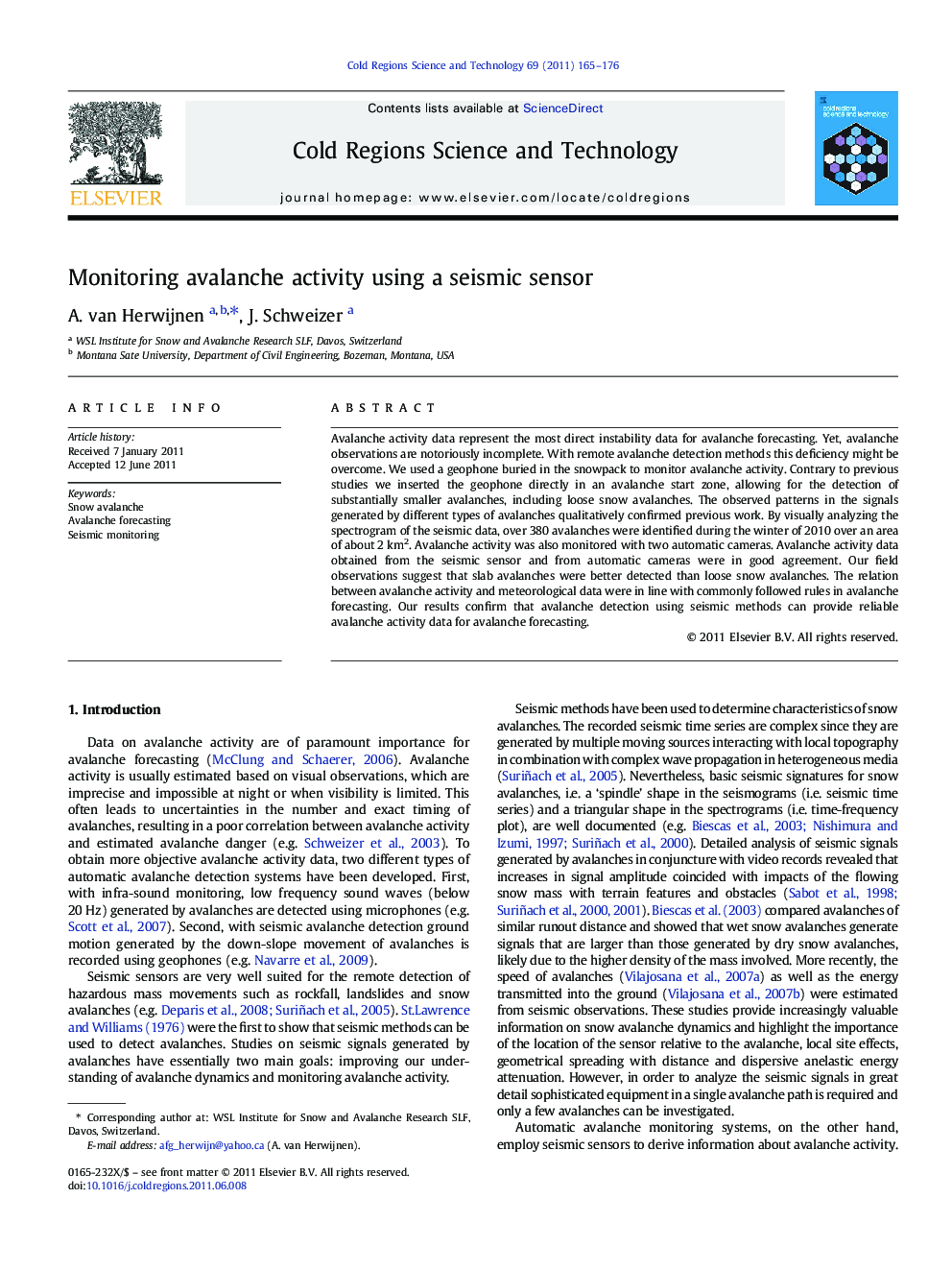| Article ID | Journal | Published Year | Pages | File Type |
|---|---|---|---|---|
| 4676070 | Cold Regions Science and Technology | 2011 | 12 Pages |
Avalanche activity data represent the most direct instability data for avalanche forecasting. Yet, avalanche observations are notoriously incomplete. With remote avalanche detection methods this deficiency might be overcome. We used a geophone buried in the snowpack to monitor avalanche activity. Contrary to previous studies we inserted the geophone directly in an avalanche start zone, allowing for the detection of substantially smaller avalanches, including loose snow avalanches. The observed patterns in the signals generated by different types of avalanches qualitatively confirmed previous work. By visually analyzing the spectrogram of the seismic data, over 380 avalanches were identified during the winter of 2010 over an area of about 2 km2. Avalanche activity was also monitored with two automatic cameras. Avalanche activity data obtained from the seismic sensor and from automatic cameras were in good agreement. Our field observations suggest that slab avalanches were better detected than loose snow avalanches. The relation between avalanche activity and meteorological data were in line with commonly followed rules in avalanche forecasting. Our results confirm that avalanche detection using seismic methods can provide reliable avalanche activity data for avalanche forecasting.
► We investigated the use of a seismic sensor for snow avalanche monitoring. ► Observed characteristics of seismic signals patterns confirmed previous work. ► Installing the seismic sensors in an avalanche start zone allowed for the detection of smaller avalanches. ► The seismic data was used to derive avalanche activity for an entire winter. ► Seismic methods can provide reliable avalanche activity data.
